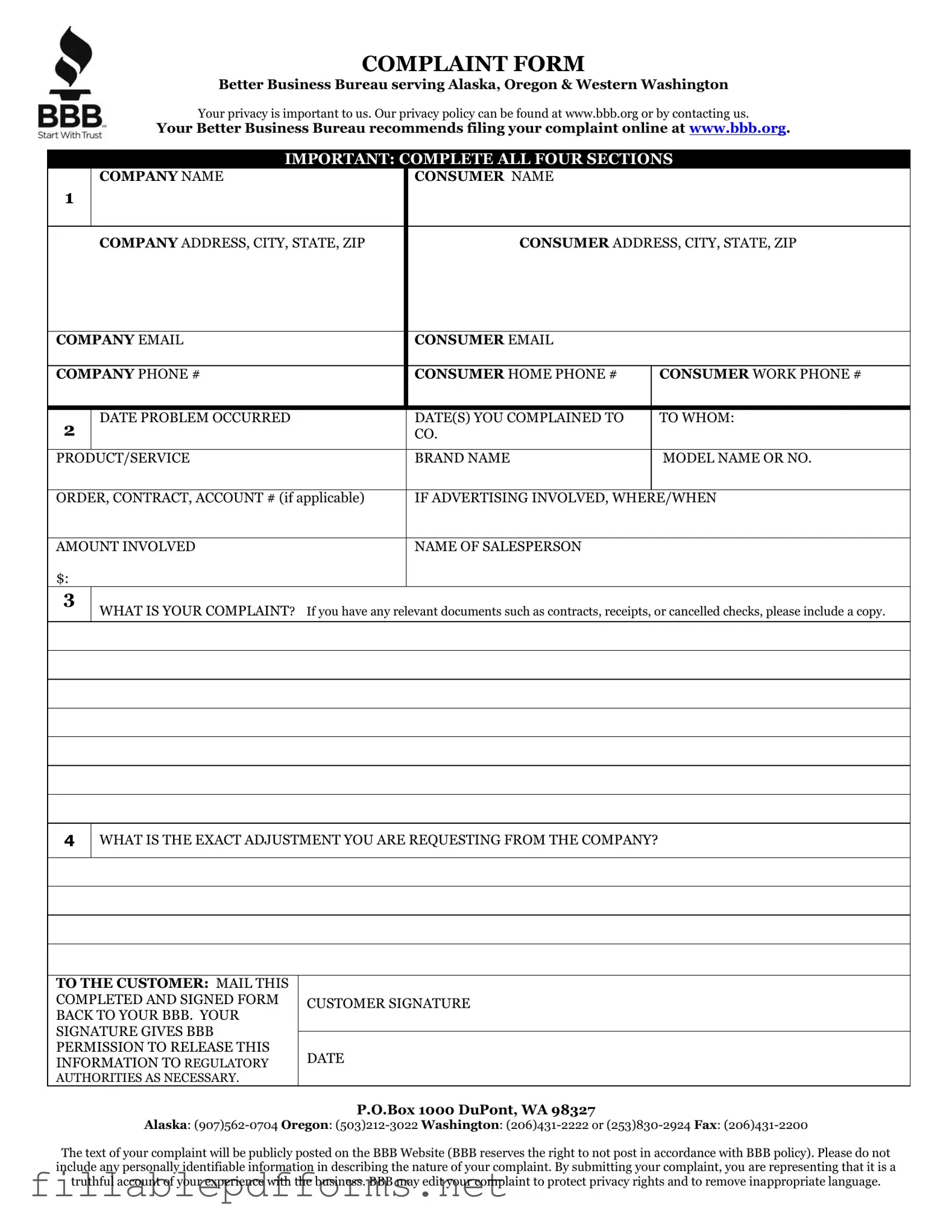When consumers encounter issues with a business, the Better Business Bureau (BBB) provides a valuable resource in the form of a complaint submission process. This process allows individuals to voice their concerns and seek resolution, promoting accountability among businesses. The BBB Complaint form is straightforward, designed to gather essential information about the complaint, including the nature of the issue, the parties involved, and any attempts made to resolve the problem directly with the business. By filling out this form, consumers can share their experiences, which not only helps them in seeking a resolution but also informs other potential customers about the business's practices. The form typically requires details such as contact information, a description of the complaint, and any relevant documentation. Once submitted, the BBB takes the necessary steps to mediate between the consumer and the business, aiming for a satisfactory outcome for both parties. Understanding how to properly complete this form can empower consumers and enhance their chances of a successful resolution.
